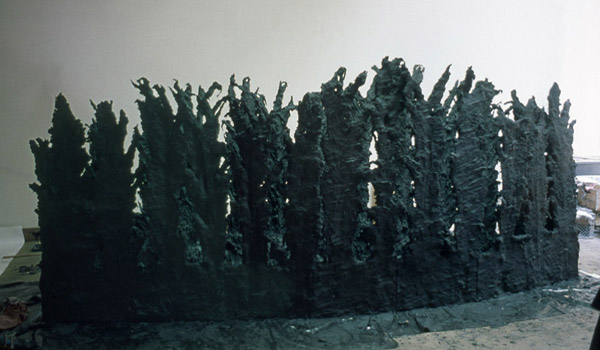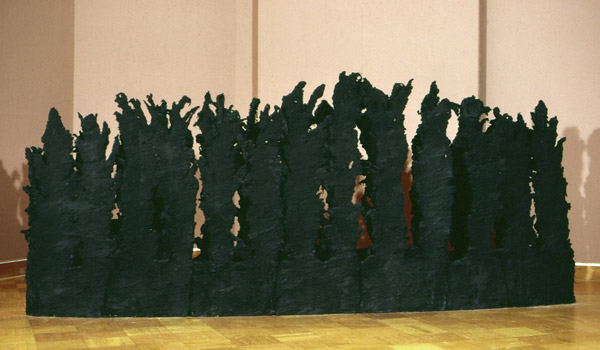 |
 |
|
Left:
studio view: unfired clay, palm fonds, black cement, 6 ft.-6
in. (2
m) h. x 14 ft.
(4.3 m) w.,
1979 Untitled (Encased Piece) was constructed for the exhibition “Northern California Clay Routes, Sculpture Now,” San Francisco Museum of Modern Art, 1979. This work, along with Fired and Glazed Earth Piece, 1979, represent initial larger-scale manifestations of the kiln and the process of firing as objects and forces in their own right. In Untitled (Encased Piece) palm fronds covered with clay are encased with cement colored black by carbon powder. The black cement metaphorically “fires” the encased clay and palm fonds by rendering them hard and immobile. The cement as limestone having been “fired” (calcined) through its production as an industrial material and the black pigment representing the carbon transformation of fire. Untitled (Encased Piece)’s image as a ship/landscape transformed by ‘firing’ is scaled up and reminiscent of ceramic ships of the same time period that also explore organic, geologic and transformative imagery and processes. Smith, Michael, H., catalog essay selection, Trains and Boats and Planes, Baxter Art Gallery, California Institute of Technology, Pasadena, CA, December 13, 1979 through January 20, 1980. After SFMOMA, the work was shown a second time in Trains and Boats and Planes, and left to decay in southern California after the exhibition. . Return: Shear Zones: Displacements/Permutations over 40+ Years of Ceramic Practice |
|